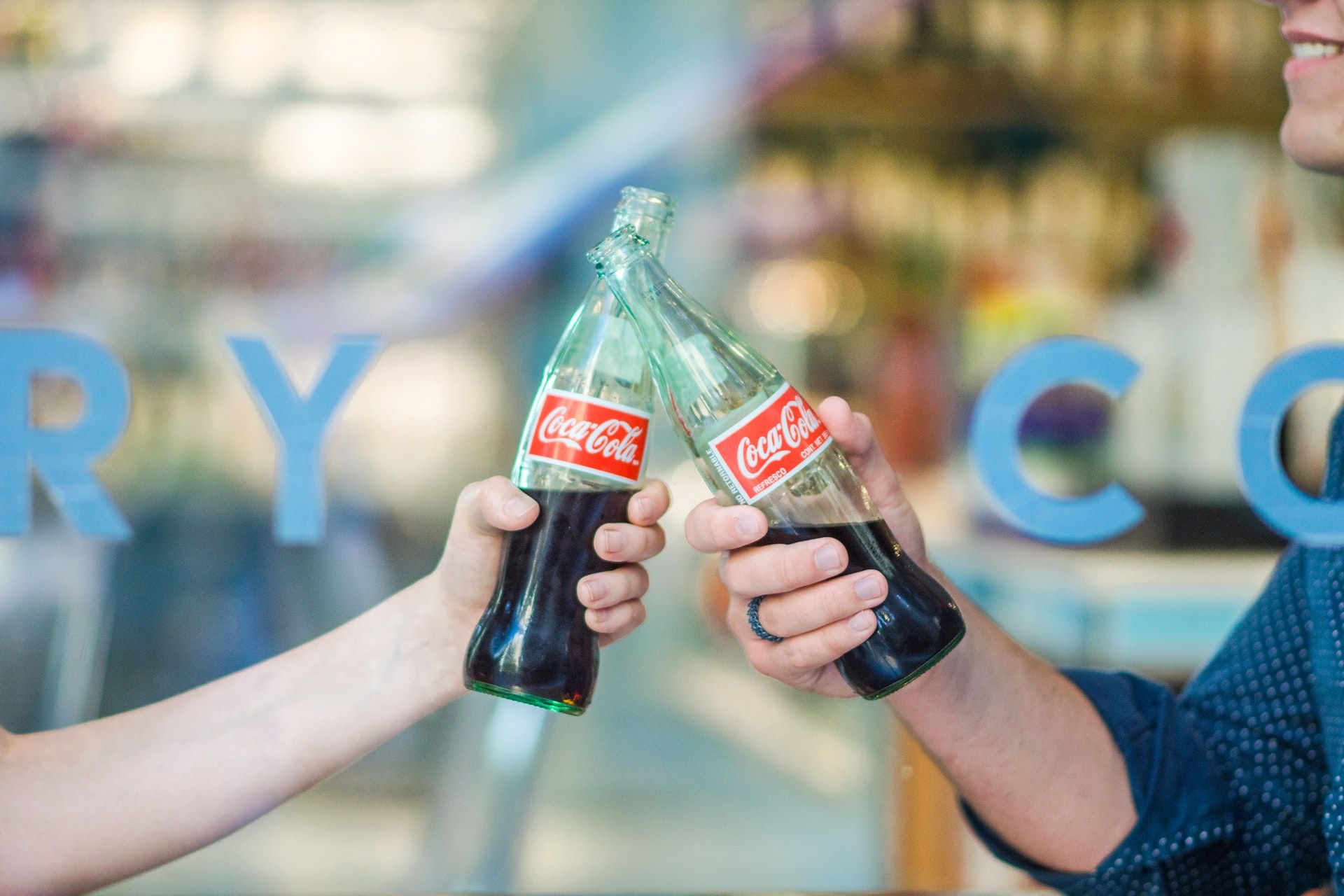The differentiation strategy can sound complicated. In practice, it is simpler than you might think. As long as the company takes the time to research and understand not only its competitors, but its own separate brand as well. Then, in no time, it should be on the way to differentiation.
- What is the differentiation strategy?
- Differentiation strategy - where to start?
- Advantages of effective differentiation
- Differentiation strategy - examples
- Why is it worth implementing a differentiation strategy?
- Główne obszary strategii dyferencjacji
- Jak skutecznie wdrożyć dyferencjację?
- Korzyści płynące z dyferencjacji
Strategia dyferencjacji to jeden z elementów tworzenia marki odnoszącej sukcesy. Gdy firma ustali, jak pozycjonuje swoją markę, może zacząć doskonalić strategię zróżnicowania. Innymi słowy wcześniej musi wiedzieć, gdzie się plasuje na rynku i co czyni ją wyjątkową. Następnie przychodzi czas na to, aby pokazać światu, jak bardzo różni się od konkurencji i z jakich konkretnie powodów.
What is the differentiation strategy?
Prosta odpowiedź na pytanie czym właściwie jest differentiation strategy byłaby taka: zróżnicowanie marki odzwierciedla to, co odróżnia ją od podobnych konkurentów na rynku. Podczas opracowywania strategii pozycjonowania marka poznaje inne firmy z jej sektora, oferujące podobne rozwiązania i produkty. Może się okazać, że potencjalni klienci mają w czym wybierać. Jak więc przekonać ich do wyboru tej a nie innej marki? Jedynym sposobem jest upewnienie ich, że jest w niej coś „innego”. Coś, co dana target group finds it more attractive. Something that will appeal to your audience and their wallets.
Unfortunately, just staying away from blue in your logo, when used by every other company in the industry, is not the end of your branding strategy. The differentiation strategy is something more complex. The company needs to make sure that everything it represents has value for customers. Starting with the function of the product, through employer branding, doświadczenia klientów, a skończywszy na efektach wizualnych używanych w brandingu.
How to stand out in a competitive market?
Check what we recommend for your company.
Strategy differentiation - where to start?
Strategię różnicowania można rozpocząć od kompleksowego zbadania firmy i elementów marki, które różnią się od tego, co oferuje konkurencja. Zazwyczaj dobrym pomysłem jest rozpoczęcie od utworzenia listy różnych elementów różnicujących, a następnie przetestowanie każdego z nich, aby sprawdzić, czy faktycznie jest dobrym wyróżnikiem. Skuteczna strategia dyferencjacji wymaga odpowiedzi na trzy kluczowe pytania.
1. Is what the company communicates authentic?
1. Is what the company communicates authentic?
The distinguishing feature of a brand is what defines the company. It's an element that highlights something important - from the way you do business to the types of products you manufacture. It is so characteristic of a given company that no other company will be able to copy it. It is not worth inventing a distinguishing feature if one does not actually exist. Today's customers are smarter than you think. They can easily see through exaggerated claims. Thus, the differentiation strategy should be based on a discriminant that the company will be able to prove every day.
2. Does what distinguishes the company matter?
Finding a few differences between your business and competitors can be quite easy. However, this does not mean that all of these differences are valuable. If the way a company distinguishes itself from other brands doesn't matter to its audience, it doesn't really add anything. It will not increase the business opportunity. The differentiation strategy requires reflection. When choosing brand differentiation strategies, a company needs to know exactly what it wants its customers to associate with it.

3. Is it feasible?
If a company is going to prove to its customers that what it says about its brand is true, it needs to make sure that it has chosen a differentiator that will work. Corporate identity is easy - a logo, brand name, etc. stand out. This is something that the company's customers can see every day. On the other hand, just telling people that the products offered by the company are better than other options on the market is much more difficult to prove.
Advantages of effective differentiation
Strategia dyferencjacji ma kilka zasadniczych zalet, które mogą pomóc w stworzeniu wyjątkowej niszy w branży. Jedną z nich jest mniejsza konkurencja cenowa. Strategia różnicowania pozwala firmie konkurować na rynku czymś innym niż niższe ceny. Na przykład firma produkująca kosmetyki może wyróżnić swoje produkty, poprawiając ich działanie lub stosując same naturalne składniki. Chociaż jej konkurenci sprzedają swoje kosmetyki taniej, nie mogą zapewnić konsumentom tak samo dobrej jakości preparatów i o tak dobrych składach.
Strategia dyferencjacji bazuje na unikatowości produktu, na jego wyjątkowych cechach. Jeśli zastanawiasz się, czym wyróżniają się Twoje wyroby, stwórz listę cech, które posiadają Twoje produkty, a których brakuje konkurencji. Część z nich naprawdę sprawia, że Twój produkt jest wyjątkowy. Teraz musisz to przekazać konsumentom – poprzez skuteczny marketing i reklamę. Zaangażuj do tego online marketingand if you operate in the business to business sector - also b2b marketing.
The differentiation strategy is also higher profits. When products are diversified and transformed into higher quality products, the effect can be one - higher profit margins. Customers who are not price sensitive expect premium products. So if your target market is willing to pay a higher price for the highest quality or better value, your business can generate more revenue with less sales. Following this line of reasoning, if a company maintains the perceived quality of its products, it can create brand loyal customers.

To kolejna korzyść jaką daje strategia dyferencjacji. Następną jest wzbudzenie w klientach przekonania, że na rynku nie ma innego produktu, który równie dobrze spełniałby ich potrzeby i oczekiwania. Co więcej – firma może zyskać przewagę na rynku nawet wtedy, gdy dostępne są podobne produkty. Jak to możliwe? Ponieważ klienci nie będą chcieli zastąpić jej produktu innym. W strategii różnicowania marki chodzi o to, jak prezentuje się otaczającemu światu. Przeanalizujmy to na przykładach.
Differentiation strategy - examples
Marką, która dobrze wie, jak powinna wyglądać differentiation strategy jest Lush. Mimo, że Lush Cosmetics dotychczas nie weszła do Polski, oferując naturalne, ręcznie robione kosmetyki, podbiła serca wielu kobiet na świecie. Marka pozycjonuje się jako wyjątkowe rozwiązanie dla zdrowia i urody. Nie przypomina przy tym żadnej innej marki tego typu na rynku i dociera do swoich klientów z ciepłą, przyjazną tożsamością werbalną, która jest widoczna we wszystkim, od opakowania po przekaz.
Być może najbardziej fundamentalnym wyróżnikiem marki Lush jest jej przywiązanie do polityki fair trade i czystość ręcznie wykonanych rozwiązań. To firma, która we wszystkim co robi pokazuje wartość społecznej i korporacyjnej odpowiedzialności. Jej marka jest przy tym prosta w odbiorze i autentyczna. Na czym polega differentiation strategy Lush? Firma wyróżnia swoja markę używają nazwy, która przywołuje idee natury i luksusu. Rozumie swoich klientów – kobiety i mężczyzn, którzy ma już dość standardowych kosmetyków.
Lush nie sprzedaje produktów. Zamiast tego sprzedaje punkt widzenia na definiowanie piękna, szukając skupienia się na naturalnych składnikach, unikalnych rozwiązaniach i zrównoważonych metodach prowadzenia biznesu. Marka oferuje też jedyne w swoim rodzaju doświadczenie w handlu detalicznym. Klienci, wchodząc do ich stacjonarnego sklepu mogą liczyć na profesjonale doradztwo a nawet próbować produktu przed zakupem. Do mnie jako konsumenta, ta strategia dyferencjacji zdecydowanie przemawia.
One of the easiest ways to make your business stand out from the crowd is to use the right techniques branding. A brand is associations, connotations or ideas related to a company, product or service. Some of these associations can be actively promoted by marketing solutions and the definition of your own corporate identity. On the other hand, part of the brand identity is impossible to control because it is influenced by customer experiences and opinions.
One example of a widely recognized brand is Coca-Cola. Her differentiation strategy is a masterpiece. Note that it is distinguished not only by the name or the product, but also by the choice of colors, the curvature of the bottles and glasses, the way it is sold, and even the history of the brand. Its marketing scheme is perceived by masses of customers as original and unique. We associate all dark, carbonated drinks other than Coca-Cola with a copy of an authentic brand. Thanks to careful branding, Coca-Cola has become a company worth approximately $ 84 billion in 2020.

Why is it worth implementing a differentiation strategy?
Having a brand differentiation strategy has probably never been more important than it is today. Online business has made most industries that also operate on the Internet (basically all industries!) Incredibly competitive.
Every Michał, Sandra or Jacek can create a cheap website with a free logo and write something about "being unique" on it. Therefore, it is not enough. Today's demanding consumers will not buy it - literally and figuratively. When we search for a service or product online, we expect it to be rated highly in Google. When we enter the site, we expect it to be user-friendly and full of beautiful and relevant images that appeal to us as customers. We want there to be some very special selling point that goes beyond the written promise. We want the brand to appeal to us and stand out from the competition we looked at 30 seconds ago. How can this be achieved? Only by creating a strong brand differentiation strategy can a company successfully differentiate itself from potential competitors.
Główne obszary strategii dyferencjacji
Rozwijając strategię dyferencjacji, warto skupić się na kluczowych obszarach, które mają największy wpływ na odbiór marki przez klientów. Pierwszym z nich jest produkt, gdzie jakość wykonania, innowacyjne funkcje czy unikalne wzornictwo mogą nadać ofercie niepowtarzalny charakter. Kolejnym polem dyferencjacji jest obsługa klienta – personalizacja kontaktu, szybkie reakcje na potrzeby i profesjonalne doradztwo stają się dziś fundamentem długotrwałych relacji. Należy też pamiętać o dystrybucji, której elastyczność i wygoda mogą przesądzić o decyzji zakupowej. Dyferencjacja to przede wszystkim umiejętność zbudowania wartości tam, gdzie konkurencja jeszcze nie dotarła. Marka, która potrafi zaangażować emocjonalnie i przekonać do swojej misji, osiąga przewagę trudną do podrobienia.
Jak skutecznie wdrożyć dyferencjację?
Aby wdrożenie dyferencjacji było skuteczne, konieczne jest rozpoczęcie od gruntownej analizy potrzeb grupy docelowej. Dopiero zrozumienie tego, co jest dla klientów najważniejsze, pozwala na zaprojektowanie unikalnych rozwiązań. Kolejnym krokiem jest monitorowanie działań konkurencji – nie po to, by je kopiować, ale by znaleźć nisze rynkowe do zagospodarowania. Co to jest strategia dyferencjacji? To proces budowania przewagi poprzez rzeczywistą wartość, a nie pusty marketingowy slogan. Zastosowanie dyferencjacji w praktyce wymaga także spójności – każdy element komunikacji marki, od logo po obsługę reklamacji, musi wzmacniać ten sam przekaz. Warto też wdrożyć system pomiaru skuteczności – dane o zaangażowaniu klientów i poziomie sprzedaży pokażą, czy differentiation strategy przynosi oczekiwane rezultaty.
Korzyści płynące z dyferencjacji
Well planned differentiation przynosi firmom szereg wymiernych korzyści, które przekładają się na trwałą przewagę konkurencyjną. Przede wszystkim umożliwia budowanie lojalności klientów, którzy chętniej wracają do marek oferujących coś więcej niż standard. Kolejną zaletą jest możliwość stosowania wyższych cen bez utraty popytu – dyferencjacja oznacza bowiem wartość, za którą klienci są gotowi zapłacić. Ponadto wyróżniająca się marka zyskuje silniejszą pozycję na rynku i staje się mniej podatna na działania konkurencji. Strategia dyferencjacji skutkuje też wyraźnym wzrostem rozpoznawalności i pozytywnym wizerunkiem firmy.

